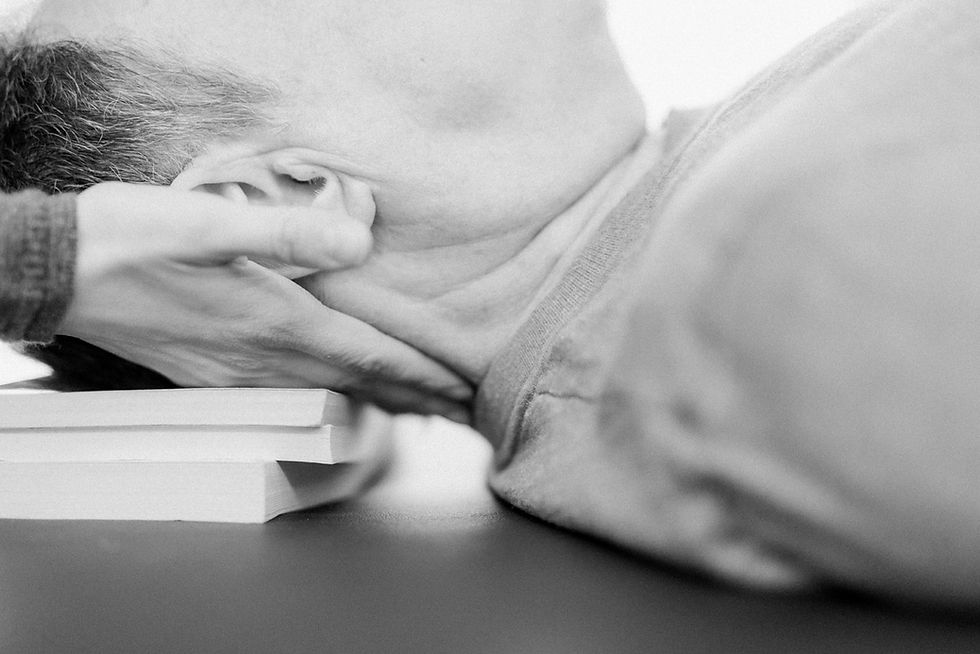What makes the Alexander Technique unique?
- Danielle Amedeo
- Mar 29, 2019
- 4 min read
Updated: May 9, 2019
Please note that there are different factions of AT teachers whose opinions vary on these points. My opinions are my own, and they stem from the work of Theodore Dimon and my studies with him at the Dimon Institute, where I received my teaching certification.
In short, here are three reasons why the Alexander Technique is unique from other modalities that might help someone with pain or anxiety:
- A core theory of upright posture that is holistic and based in scientific fact.
- A unique view of the mind/body connection and our deeply engrained habits.
- You are a student learning a skill, not a patient receiving treatment. It's yours for a lifetime, and will help you as you learn and practice other skills.
Now let's go into each of these points in a little bit of detail. Some recommended reading is listed at the end of this post if you'd like to learn more.
Upright Posture & the Motor System
Upright posture is much more complex and harder to sustain than our four (or more!) legged friends. Despite that, our motor system is capable of maintaining upright posture all day long. It can support normal activities like walking, gardening, and sitting at the dinner table without tiring out and causing pain. The problem so many of us have is that this system has stopped working properly. What F.M. Alexander discovered is that the speedy pace of our lives and the stress we are under makes the motor system short circuit in a sense. Our nervous system becomes hyperactive and the muscles, which are activated from neural stimuli, become chronically overworked as well. This leads to excessive tension and anxiety that can spin out of control. It prevents the motor system from functioning properly in adults and often, as we see more and more, in children too.
The good news is that unless we have had a serious injury affecting the motor system, this problem, which has become an epidemic in every industrialized society, can be reversed. The philosophy behind the Alexander Technique is that by restoring healthy tone and mobility to the muscles, reducing unnecessary strain, and quieting the nervous system, the motor system will begin to work properly again and provide the support we need to maintain upright posture and engage in our daily activities.
This system, when it is functioning well, works holistically with all the parts sharing effort. If a problem occurs in one area, it will affect the rest of the body. Whereas other modalities might spend time massaging or working out a shoulder, we take an entirely different perspective. The Alexander Technique addresses the whole system first rather than the part, creating a healthier system in which a problem can then be resolved. Our goal is not to massage away stress, but to get all the parts working more holistically and efficiently and then identifying where and why this problem came about to begin with.
Habits of Mind & Body

As the motor system is restored, it begins to work more efficiently. You feel lighter and springier on your feet, but soon after you leave your teacher's studio, the feeling goes away. This is because we have all developed deeply engrained habits over a lifetime that caused our motor system to short circuit in the first place. Tasks are scripted such that as soon as we sit back down at our desk or pick up the chef's knife, we revert back to our previous state. This is why lessons in the Alexander Technique place equal, if not more focus on building new sensorial thinking skills so we can address these habits. It's those moments where we space out, put on blinders and stare a computer for hours without stopping, or let our thoughts run in circles that we lose track of our physical selves and our worst habits creep to the surface. The Alexander Technique teaches you how to live more consciously, beginning with a mindfulness practice that you develop during lessons and slowly expand into other domains of your life. You'll begin to assess your state more often throughout the day and prevent your motor system from short circuiting as it used to. At first, this happens more generally- you'll notice more quickly when self care is needed and be able to unwind and undo any compression and added tension at the end of a hard day.
As you become more skilled in this work, you will start to uncover how physical behaviors are linked to habitual thinking. Your teacher will help you identify these psychophysical (mind/body) scripts before they happen and make more conscious choices in the moment.
This is a truly unique aspect of the work, and what makes it educational rather than medical or therapeutic. You are learning a skill - how to stay present and aware of yourself so you can maintain a healthy functioning motor system, address habits as they occur in action, and prevent problems from recurring.
A Student, not a Patient
Finally, it's important to clarify that you, the student, make these changes occur. You are building a skill set like singing, or playing golf. The teacher guides and encourages you, but nothing is done TO you. You work together as a team, with the goal making you increasingly self sufficient.
Recommended Reading
Neurodynamics: The Art of Mindfulness in Action by Theodore Dimon
The Elements of Skill by Theodore Dimon








Comments